Cannibal animals: 12 creatures that gobble up their own kind
Cannibalism is more common in the animal kingdom than you might think.
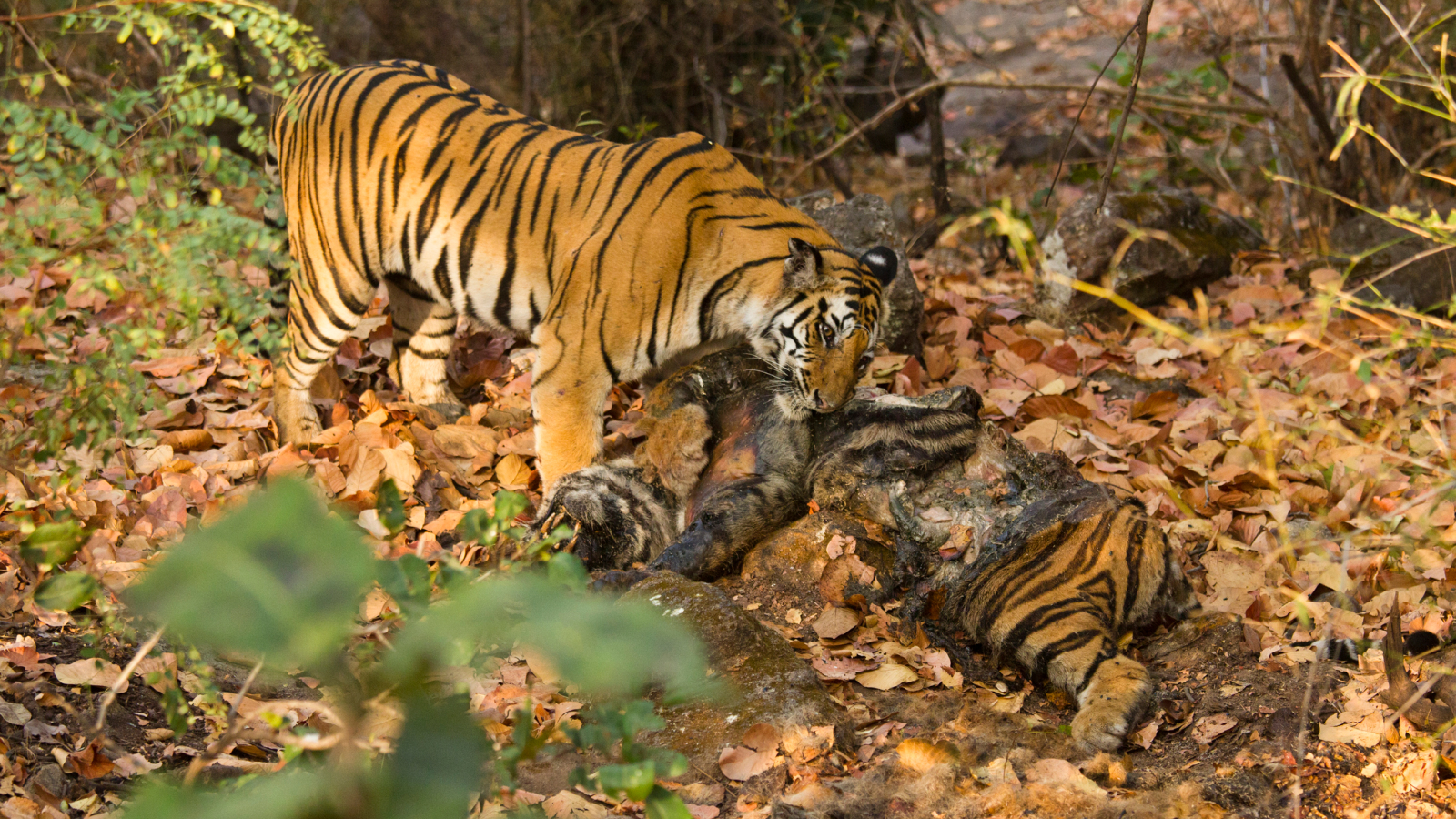
Cannibalism is far from the ultimate taboo in nature, and animals have been eating their own kind for millions of years — the world's oldest known case dating back to trilobites half a billion years ago.
Today, many creatures engage in this behavior. These cannibal animals don't eat fellow members of their species all the time and some only become cannibalistic in specific, rare scenarios. But from hungry hippos to self-sacrificing spiders, here are 12 animals that eat their own.
Warning: This content may be upsetting to some readers.
Monkeys
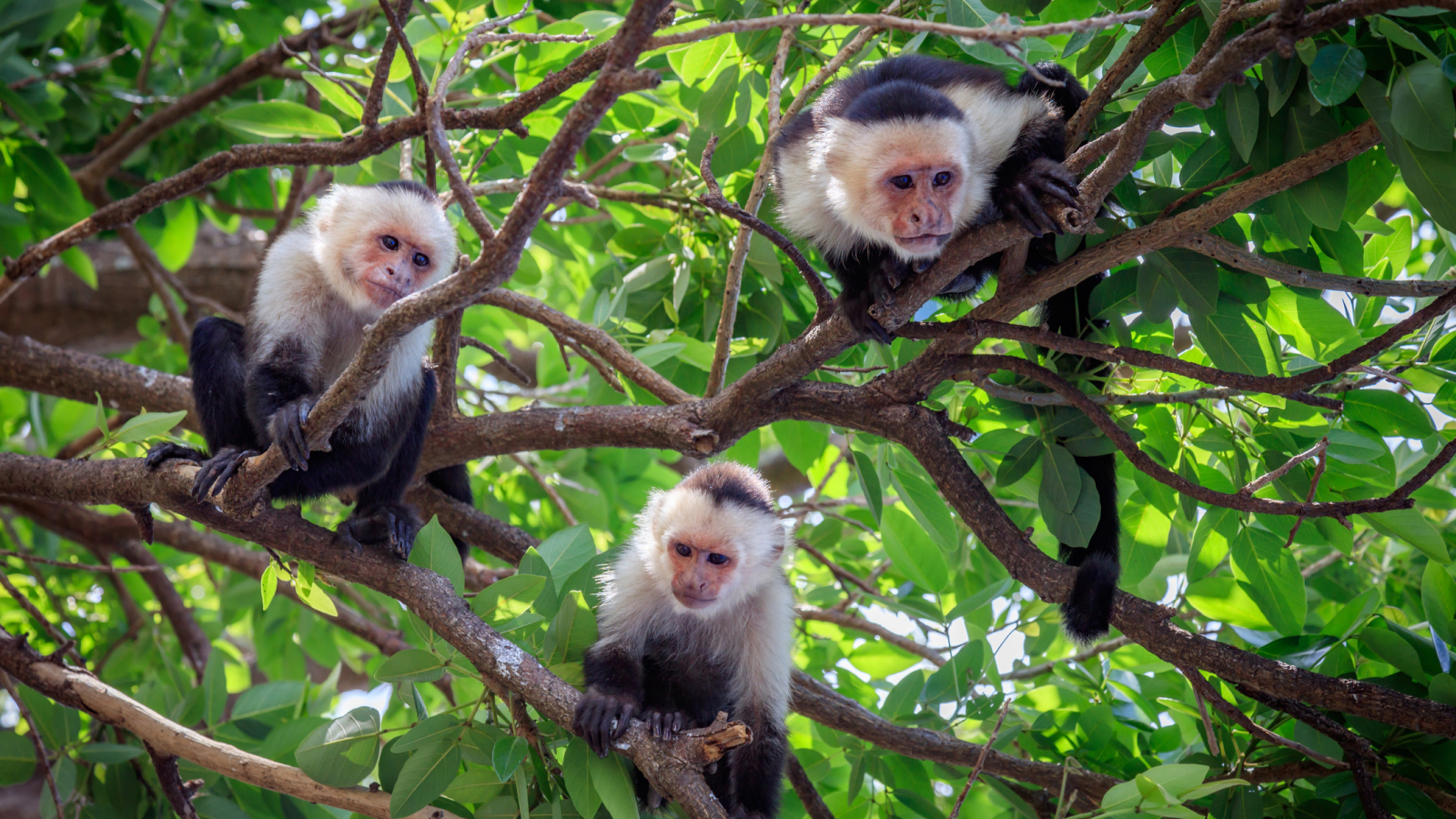
Cannibalism in monkeys is usually associated with infanticide, or the killing of infants. For example, in 2019, researchers observed a group of Panamanian white-faced capuchin monkeys (Cebus imitator) cannibalizing a newborn in the Santa Rosa National Park in Costa Rica after the 10-day-old monkey fell from a tree.
Researchers who observed the cannibalism suspected that an adult male pushed or attacked the infant, causing its death. Adult males of many different species will kill unrelated offspring for the chance to sire their own.
Polar Bears
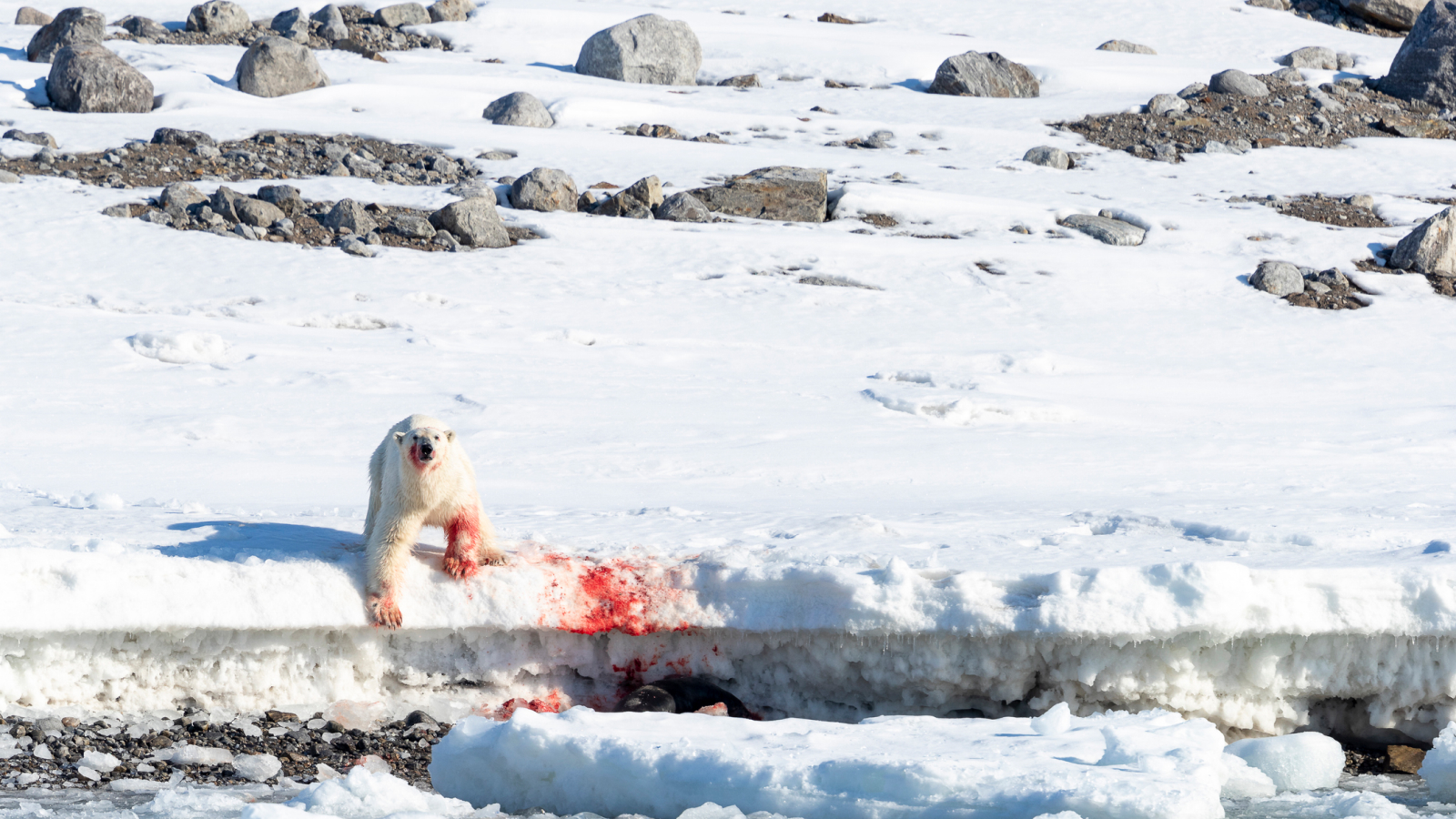
Most cases of polar bear (Ursus maritimus) cannibalism involve males killing cubs, sub-adults or — very occasionally — adult females. However, both male and female polar bears will scavenge on the carcasses of dead polar bears that have been killed and skinned by humans, according to a 2011 study published in the journal Arctic.
The Guardian reported in 2020 that cannibalism was on the rise in polar bears in northern Russia, possibly due to a lack of food, as melting sea ice driven by climate change and human activity force them away from their normal hunting grounds.
Sign up for the Live Science daily newsletter now
Get the world’s most fascinating discoveries delivered straight to your inbox.
Jaguars
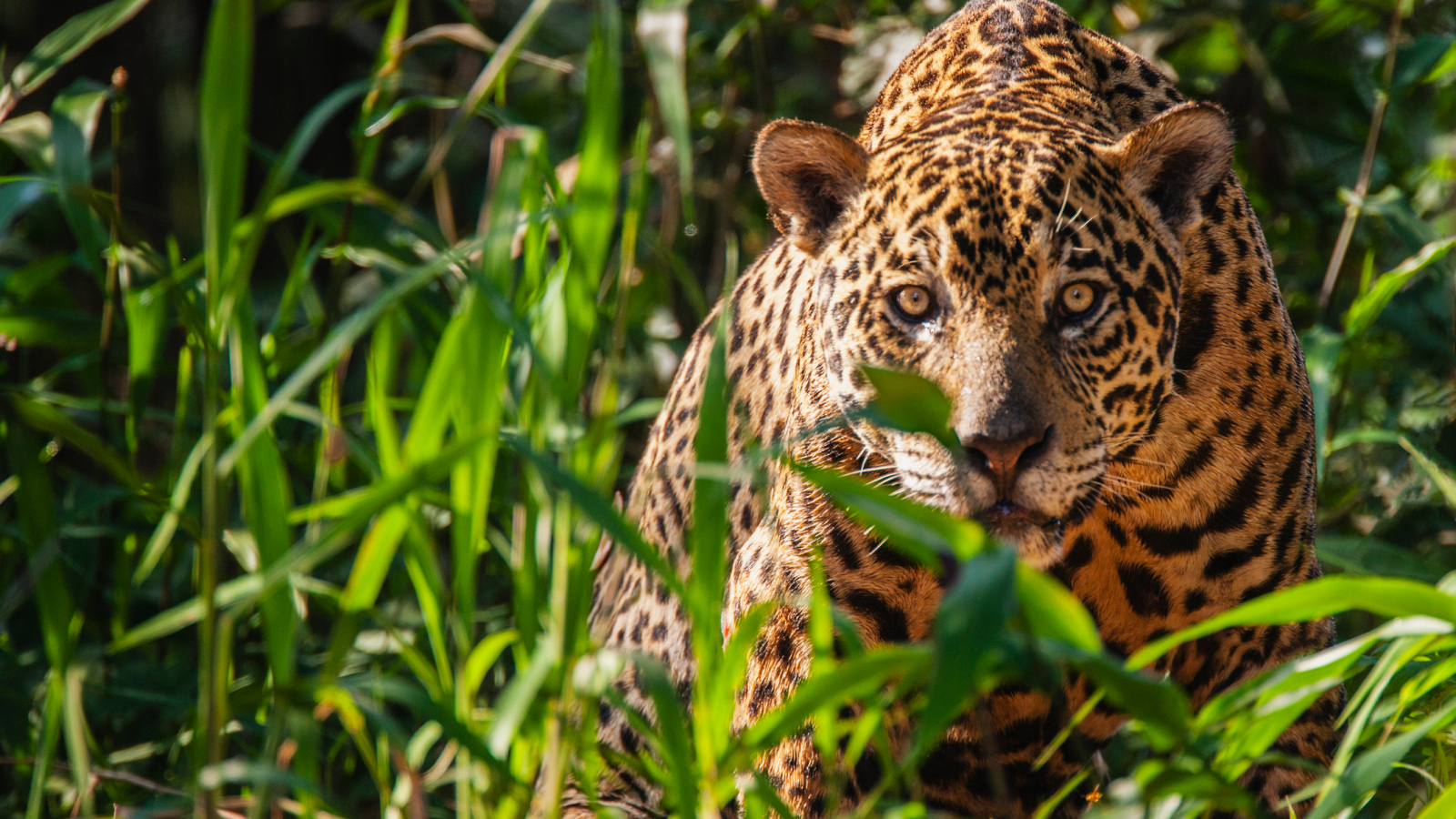
A 2010 study published in the journal The Southwestern Naturalist documented the first case of wild cannibalism among adult jaguars (Panthera onca). Two male jaguars appeared to have killed and partially eaten a female jaguar. The researchers believed that with plenty of prey in the area, the violent encounter likely stemmed from the social stress of unfamiliar jaguars meeting each other in the forest. Jaguar cannibalism can also occur during infanticide, although it's rare.
Sand Tiger Sharks
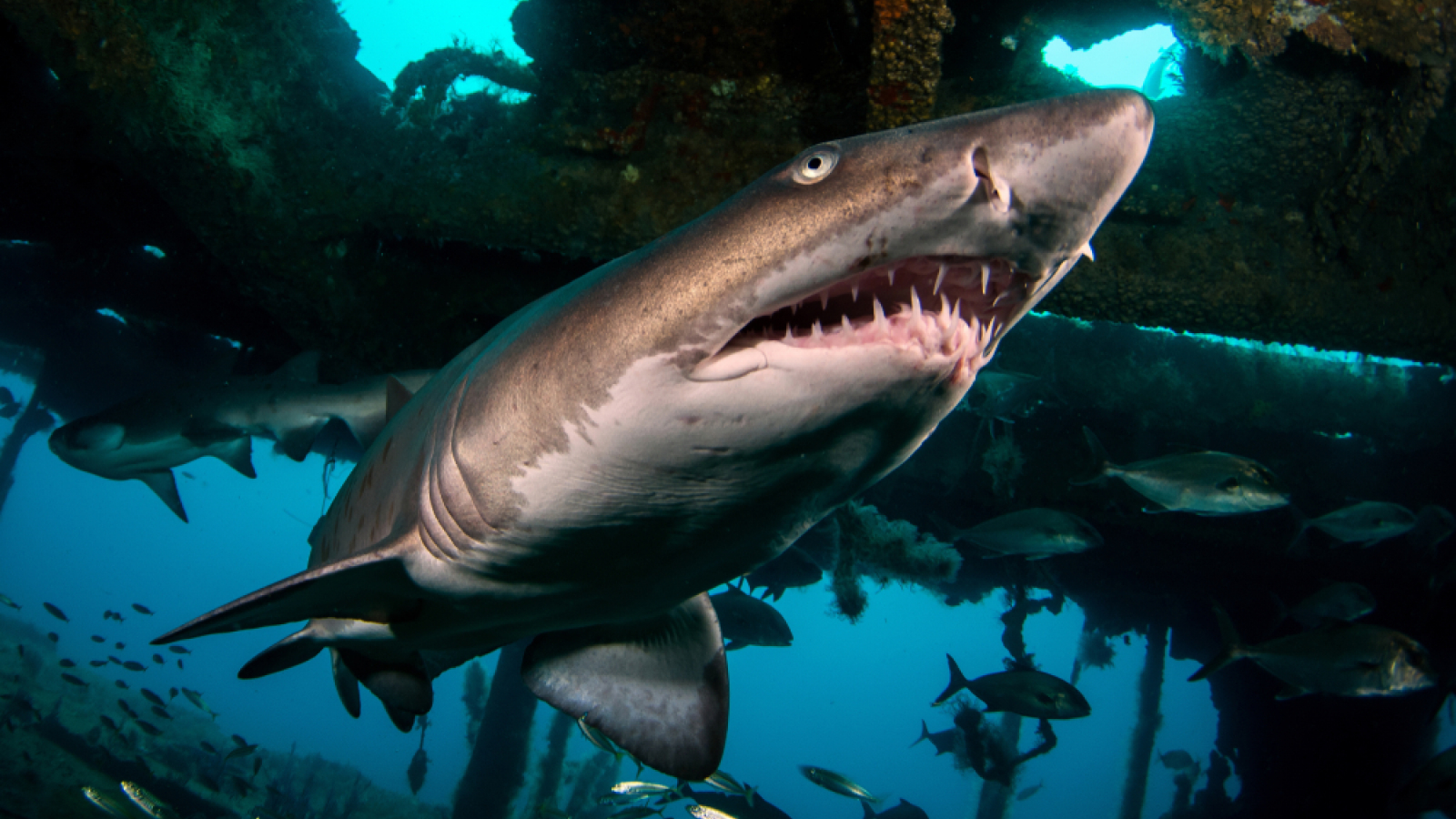
Sand tiger sharks (Carcharias taurus) cannibalize each other before they've even left the womb. Researchers have long documented sand tiger shark embryos in the stomachs of other embryos, with pups attacking and eating their womb mates as they develop. This cannibalism means that only the biggest, strongest offspring survive.
Competition may be driving sand tiger sharks to eat each other in the womb. Adult females can mate with multiple males, and the cannibalization might be between the embryos of different fathers. Researchers have found five to seven embryos from multiple fathers in the wombs of females early in their gestation, and two embryos from one father in the wombs of females later in their gestation.
It's possible that offspring from the first male to mate with a female have more time to develop and the offspring of subsequent males are smaller, and become their food, but researchers aren't certain. Adult sharks will also eat smaller members of their own species.
Alligators
Alligators chomp down a variety of prey, including other alligators. Port Charlotte resident Tammy Shaw captured this cannibalism on video in 2022 while paddleboarding in Silver Springs State Park in Florida, WKMG News 6 ClickOrlando reported. In the video, a large alligator surfaces with a smaller alligator in its jaws.
Adam Rosenblatt, an assistant professor of biology at the University of North Florida who studies American alligators (Alligator mississippiensis), previously told Live Science that alligator cannibalism has occurred for millions of years. Alligators eat smaller animals whole and shake larger prey in their jaws to break apart more manageable pieces, sometimes spinning rapidly in a death roll — also used to kill prey — to tear off chunks of flesh.
Tigers

Researchers are still studying cannibalism behavior in tigers (Panthera tigris), but there's evidence that adults occasionally consume cubs and other adults. For example, a tiger killed and fed on an adult female tiger and later two sub-adults in Kanha National Park in India in 2019, the Times of India reported. With plenty of prey available in the area, the acts of cannibalism surprised wildlife officials and conservationists, according to the Times of India.
Spiders
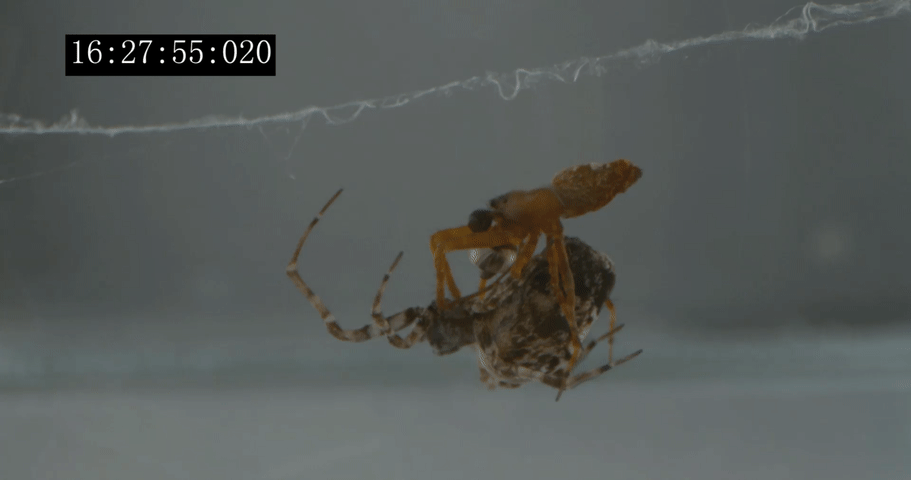
Spiders engage in different forms of cannibalism. There are plenty of examples of female spiders devouring males after mating — some species of black widow — are famous for this behavior — to the point that one species of male orb-weaving spiders, Philoponella prominens, have evolved special adaptations to escape a post-coital demise. These males dramatically catapult themselves off females immediately after mating. Those that fail to escape are devoured.
Male desert spiders Stegodyphus lineatus engage in infanticide by eating a female's egg sac before her offspring can hatch. And if the offspring do manage to hatch — they eat their mother. This suicidal maternal care is called matriphagy.
Related: Friends with benefits? Cannibalism not all bad for male praying mantis
Lancetfish
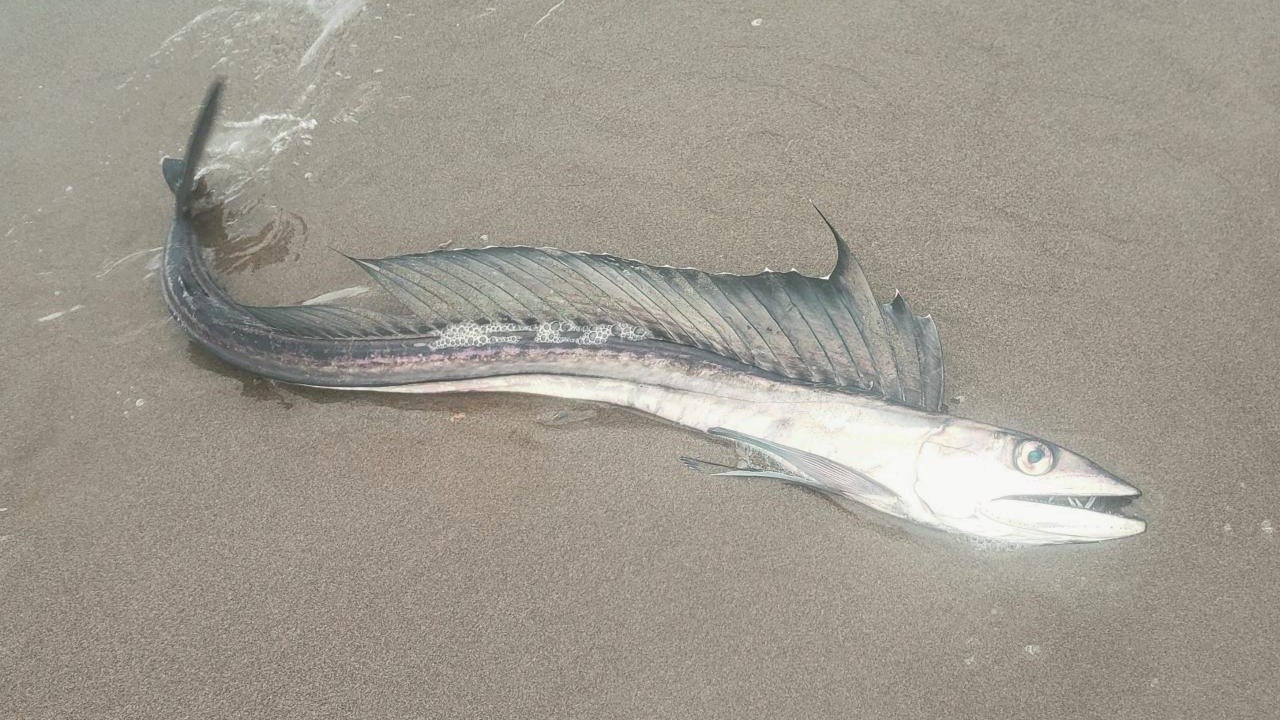
Longnose lancetfish (Alepisaurus ferox) are peculiar deep-sea cannibals that grow up to 7 feet (2.1 meters) long in tropical and subtropical oceans, often dwelling in the twilight zone around 650 to 3,300 feet (200 to 1,000 m) beneath the surface.
Smaller lancetfish regularly show up in the stomachs of larger lancetfish, suggesting the creatures commonly eat each other. Researchers have even found lancetfish in the stomachs of lancetfish in the stomachs of other lancetfish, like a Russian doll of lancetfish predation.
Hellbender Salamanders
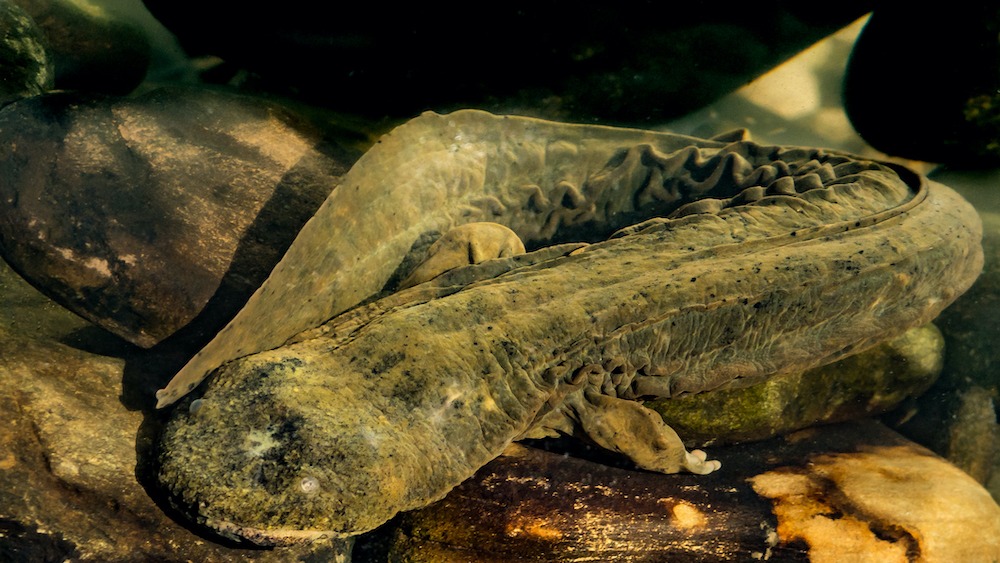
Male hellbender salamanders (Cryptobranchus alleganiensis) are doting fathers with one drawback: They usually cannibalize around 14% of their offspring. This normally isn't a problem for the survival of their species, as the salamanders often consume offspring that had a low chance of survival anyway. However, deforestation is increasing their appetite.
Researchers suspect that deforestation caused by humans is changing the water chemistry in salamander habitats and depleting their food supply, causing males to eat more of their young. Other species, including cane toads (Rhinella marina) and comb jellies (Mnemiopsis leidyi), also eat their own young. The practice is called filial cannibalism.
Hippos
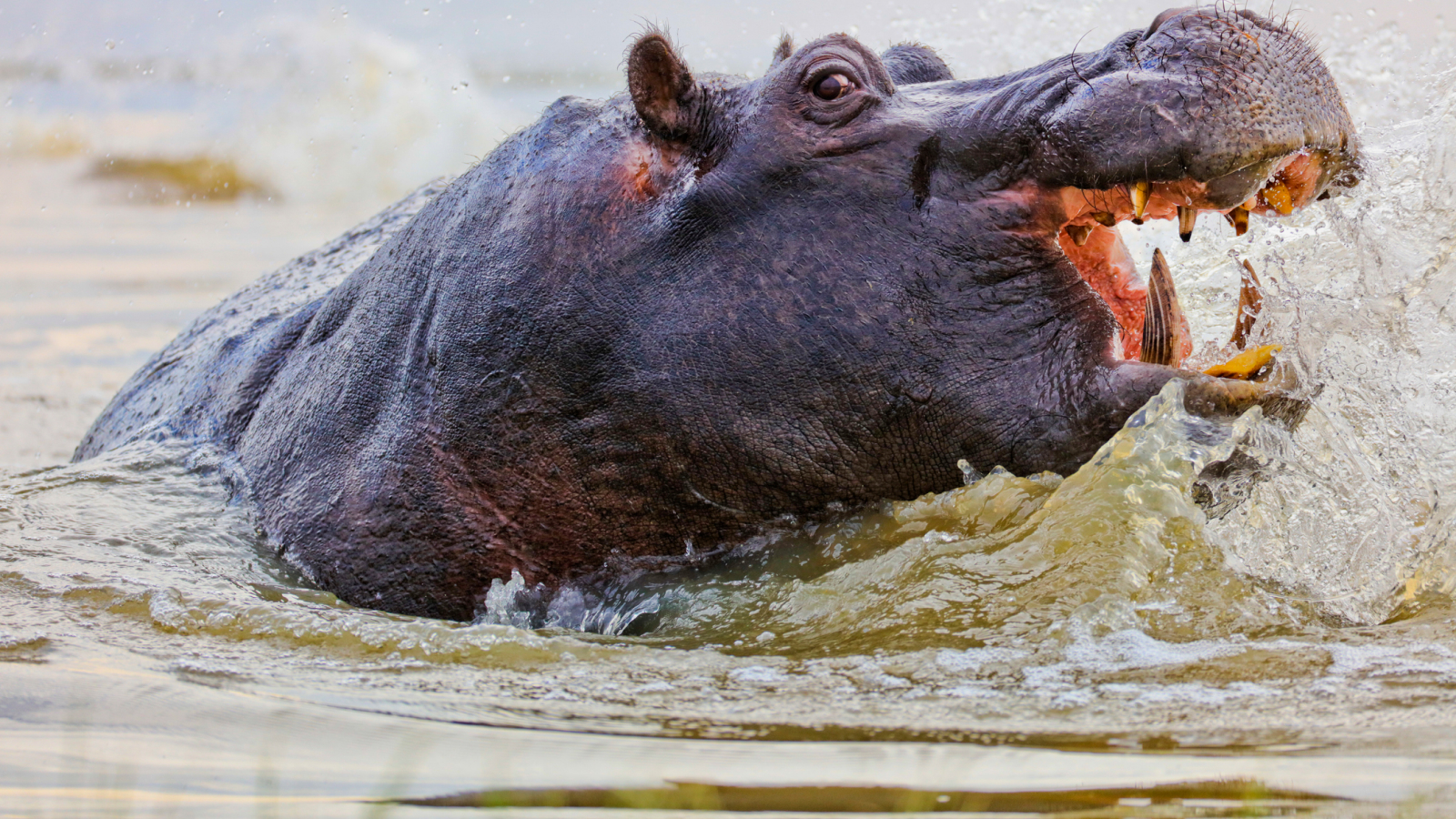
Researchers thought hippos (Hippopotamus amphibius) were strictly herbivores until the 1990s, when people started documenting them scavenging carcasses for meat — including the remains of fellow hippos. Cannibalism may have been partly to blame for an anthrax outbreak in a hippo population in Uganda in 2004. The hippos potentially helped spread the disease by scavenging on the carcasses of infected individuals, New Scientist reported.
Seals
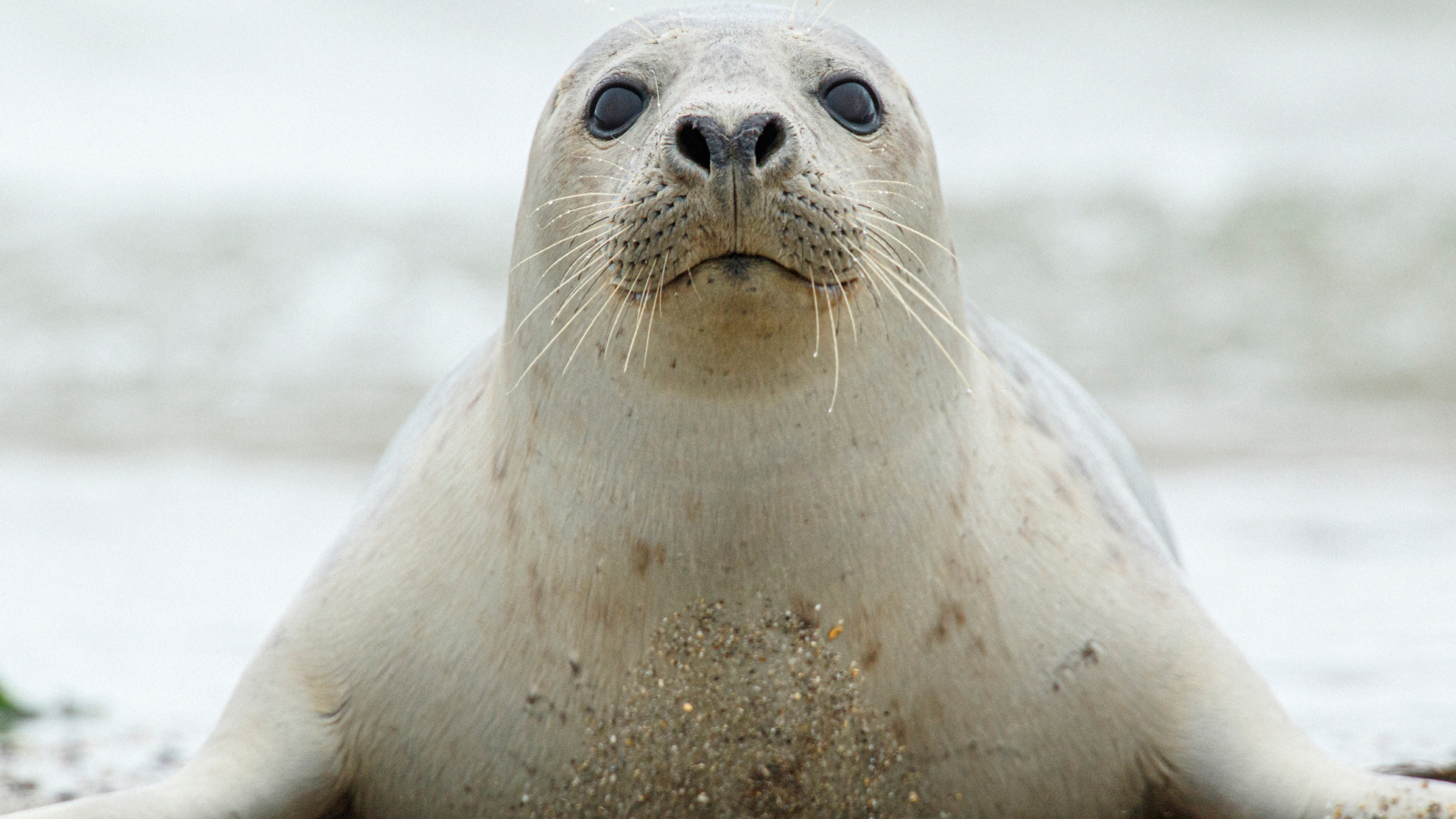
Gray seals (Halichoerus grypus) mostly eat fish but are partial to the odd act of cannibalism. A 2019 study published in the Journal of Sea Research described a sub-adult male seal killing a juvenile and feeding on its energy-rich blubber for around 90 minutes. The authors noted that 1 ounce (28 grams) of seal blubber has the same amount of calories as 3.5 ounces (100 g) of herring fish — gray seals' usual meal — while 0.4 ounce (12 g) of blubber is the equivalent of 3.5 ounces of cod, so cannibalism is potentially good calorific value for the seals.
Humans

Humans have engaged in cannibalism throughout our history, from eating enemies to reflect aggression to consuming loved ones to honor their passing. Those on the brink of starvation have also succumbed to cannibalism to survive, including during times of famine, on grueling expeditions and when stranded. There's also evidence that Neanderthals and other extinct human relatives turned to cannibalism at one time or another.
Despite all this, humans are typically innately against the idea of eating their own kind, and the act is often considered the ultimate taboo.

Patrick Pester is the trending news writer at Live Science. His work has appeared on other science websites, such as BBC Science Focus and Scientific American. Patrick retrained as a journalist after spending his early career working in zoos and wildlife conservation. He was awarded the Master's Excellence Scholarship to study at Cardiff University where he completed a master's degree in international journalism. He also has a second master's degree in biodiversity, evolution and conservation in action from Middlesex University London. When he isn't writing news, Patrick investigates the sale of human remains.










